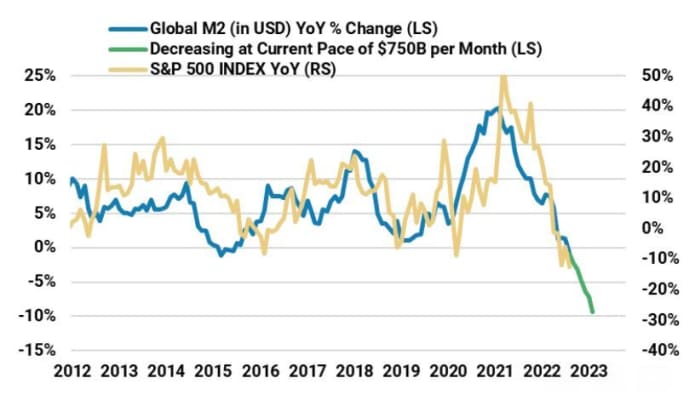Morgan Stanley Chief Equity Strategist Mike Wilson on Monday has doubled down on his call for stocks to continue falling into the end of 2022 partly because of a shrinking supply of dollars in some of the world’s biggest economies.
Even with Monday’s rally, U.S. stocks likely will be headed lower for the foreseeable future, as volatility across equities, bonds, commodities and currencies could remain elevated, Wilson said, in a Monday client note.
The S&P 500
SPX,
has fallen more than 6.5% since Monday Sept. 6, a day after Wilson published an earlier note calling for another leg lower in stocks. Among top Wall Street analysts, Wilson has been widely credited with correctly predicting the latest bear market in stocks this year.
See: Here’s what Morgan Stanley says will fuel another decline in stocks
The problem, according to Wilson, is that as interest rates continue to rise and the Fed keeps shrink its balance sheet, it could risk provoking a crisis somewhere in the world, or even in the U.S.
This is because higher interest rates create a drag on the U.S. economy by making it more expensive for corporations and households to borrow money, while a stronger dollar makes it more difficult for emerging economies to pay back debt denominated in dollars.
If this happens, the Fed will likely be called upon to reverse course on the aggressive monetary tightening it has promised to help counter inflation.
Problems already have begun to surface, Wilson said, pointing to “M2” data, a key measure of dollars in circulation that shows the money supply has begun to shrink over the past 12 months.
“The U.S. dollar is very important for the direction of risk markets and this is why we track the growth of M2 so closely,” Wilson said.
M2 for the “big four” economies: the U.S., China, the eurozone and Japan, peaked in March 2021, and thereafter, has decreased by $4 trillion, according to Wilson’s data.
Tracking the rate of change in the money supply for these economies is important, Wilson said, since it tends to be correlated with lower equity prices, as the chart below shows.

MORGAN STANLEY
This contraction in the money supply is happening at a time when the dollar
DXY,
is trading near its strongest level in 20 years.
When might the Fed finally reverse course? Wilson said investors should keep an eye out for signs that the stronger U.S. dollar is becoming a problem domestically.
As MarketWatch has reported, the strong U.S. dollar has become a “wrecking ball” for global financial markets, and is also adding to fiscal strains in many emerging economies that are now finding their dollar-denominated debt to be even more of a burden.
See: Why an epic U.S. dollar rally could be a ‘wrecking ball’ for financial markets
It remains to be seen whether the Fed halting its campaign of interest rate hikes and balance sheet reduction will be enough to stave off a crisis. It’s possible that the Fed might need to reverse course and cut rates.
Fed Chair Jerome Powell has insisted that the Fed couldn’t risk cutting interest rates prematurely for fear that inflation might become even more entrenched.
No matter, stocks are likely headed lower until a Fed pivot finally arrives, Wilson said, adding that expectations for that policy change might be enough to induce a sharp, but short-lived, rally in stocks.
However, Wilson said it likely already would be too late to avert an earnings recession, typically defined as two quarters of negative earnings growth for the S&P 500.
Wilson’s argument for the Fed to pivot under pressure comes as more individuals and organizations complain about the blowback from the central bank’s rate hikes.
On Monday, the United Nations Conference on Trade and Development said in a report that the Fed could risk seriously harming the economies of developing nations if it continues to raise borrowing costs.
See: U.N. calls on Fed, other central banks to halt interest-rate increases
After cementing their worst monthly performance since March 2020 on Friday, U.S. stocks have started October and the fourth quarter in the green, with the S&P 500 rising 2.7%, the Dow Jones Industrial Average
DJIA,
rising 2.8% and the Nasdaq Composite
COMP,
rising 2.4%.
See: It was the worst September for stocks since 2002. What that means for October.
Source: https://www.marketwatch.com/story/stocks-will-continue-falling-even-after-fed-pivots-warns-morgan-stanley-strategist-who-predicted-bear-market-11664821513?siteid=yhoof2&yptr=yahoo
